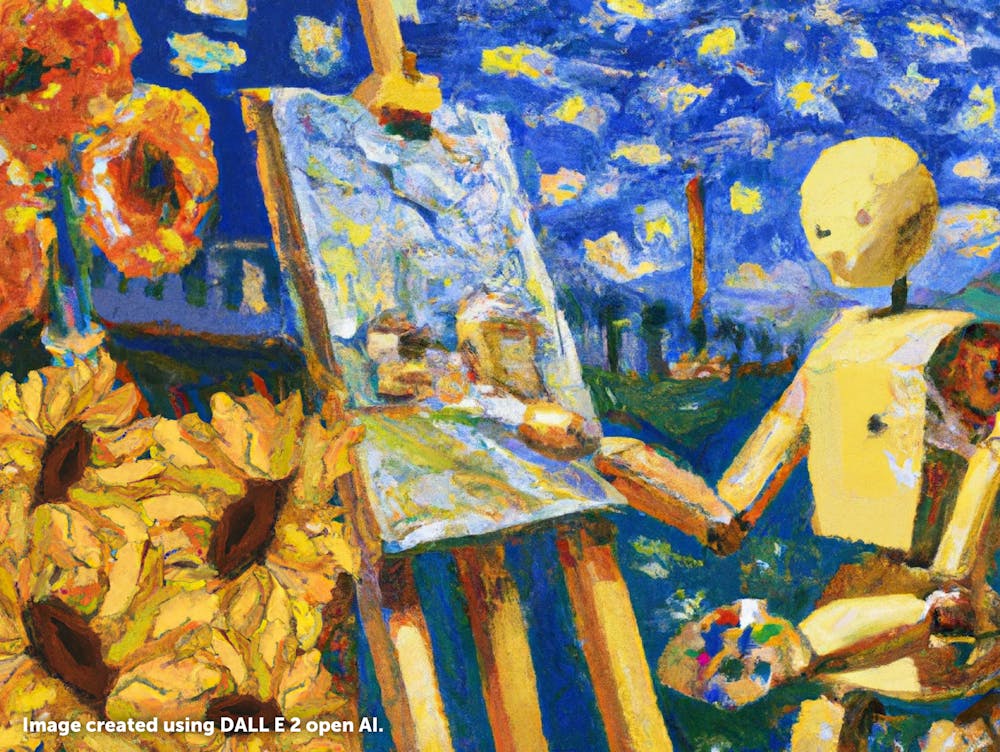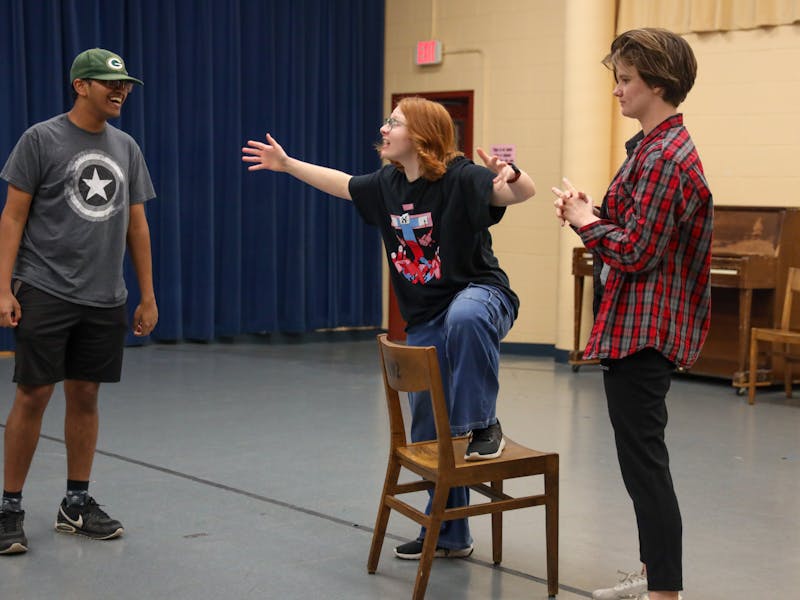Artificial intelligence (A.I) has been making a big impact on the world of art and writing. A.I.-driven tools are increasingly being used to create artwork and writing that is indistinguishable from human-made creations. This has caused much debate, as some people are concerned about the implications of this technology for creativity and artistic expression. A.I. writing tools have already been used to generate books, poems and even entire novels. A.I. art creation tools have also been developed, allowing artists to create unique pieces with the help of A.I. algorithms. This technology has sparked controversy, as some people worry that it could take away from humans’ creative potential and limit artistic expression. Some people argue that A.I.-generated works are not truly “original” or “creative” since they lack the emotion and creativity that only humans can provide. This debate will likely continue as A.I. becomes more advanced, but it's clear that A.I. is here to stay in the world of art and writing. As technology advances, so too will our understanding of how these tools can be used to create unique works of art and literature.
The paragraph above was written in 4.2 seconds using the website Rytr and typing in “role of A.I. in writing and art.”
A new viral trend is beginning: A.I. writing and A.I. art. Major programs like ChatGPT and Jasper Art are taking the internet by storm, and people in almost every career are being—or will be—impacted by these A.I. generators. When this article was written, ChatGPT had already gone so viral that the website had been at capacity for three days.
A.I. writing generators are becoming very powerful tools. For instance, people can use Rytr to write blog posts, essays, emails, cover letters, business pitches, story plots, YouTube video ideas and even song lyrics. Users also have the choice of 21 writing tones to choose from, ranging from formal to humorous to worried.
According to the Washington Post, A.I.-generated writing and art works in virtually the same way: the A.I. is trained by going through millions of articles or images, then creates its own product based on these other works. All of this happens within seconds. As a result, there are many opinions regarding how ethical A.I.-generated art and writing are.
Hobby artist and USC student Bhavani Tuppale believes that A.I.-generated art and writing can be a form of plagiarism if used incorrectly. How A.I. will be used is dependent on the artist. “Some artists might use it to plagiarize," Tuppale said. "Maybe they are plagiarizing something from another piece of media and making it their own for bad reasons such as profiting off it. Some may want to use it as a reference."
On the other hand, Dr. Gareth Rees-White, an English professor at the University of South Carolina, has an alternate opinion. “I think we need to rethink what plagiarism is,” Rees-White said. “I think if we can work out a way to do this whilst giving credit where credit should be due, in theory, this could be an evolution of things like spell-checking.”
“If you sample something from someone else and use it for a different purpose, you're creating new art through that thing,” Rees-White said. “If you're taking something and it was not your creation and using A.I. to make it a bit different and you're not giving them credit for it, you've stolen it at the end of the day.” According to Rees-White, there are proposed training sessions for faculty at USC who want to know how to watch out for students using A.I. writing generators to write essays.
“But my sense is that there is also an element of how you could maybe make it not a demon, like make it not be the thing that destroys education,” Rees-White said. “Instead, make it the thing that could actually just be the next step in education.” Nevertheless, Rees-White predicts that this is something that’s now having to be taken into account when making the standard syllabi.
Another major argument regarding A.I. writing and art debates is whether A.I.-generated content really “counts” as a valid contribution to its field. Some people argue that A.I.-generated pieces cannot be truly considered art.
"In digital art or traditional art there is some effort that the artist themselves put onto it, executing some idea," Tuppale said. "I don't think that [art] is quite valid unless there is some sort of originality put into it by the artist."
Scientific American suggests that A.I.-generated art cannot be considered art: a machine cannot consciously express an idea, personal experience or cultural context.
In contrast, Rees-White thinks that this can be reconciled by changing our perception of what art and writing are. “It is ultimately still writing. It is ultimately still art. It's just not writing and art in the conception of it that we have of it," Rees-White said. “Where it goes into the extreme gray area is who counts as the creator.”
So, who gets the credit when it comes to A.I.-generated content? Because of the novelty of this concept, a definite answer hasn't been established. According to Smithsonian Magazine, actor James Earl Jones has sold his voice to Disney so that his vocalizations can live on as the official voice of Darth Vader. This is made possible by an A.I. program that learns Jones’s vocal tones and inflections. When it comes to using A.I. like this, who gets the credit is very much a gray area.
“Does James Earl Jones win best actor? Does the person who wrote the A.I. script get the award? Does the person who wrote the film script that the A.I. reads get the award?” Rees-White said. “We are gonna have to really reconceptualize how we actually approach these things. Because in the current iteration of everything, it is unjust. Someone won something for something they didn't do but also someone needs to win that something.”
Studio art major Caroline Anderson believes that A.I.-generated content are valid contributions, but should be judged independently from human-created content. “I think for it to be fair to artists, it shouldn’t be competing in the same bracket with other art,” Anderson said.
But in an increasingly automated society, when does human-created content become too inefficient for companies and organizations to support? From a purely economic standpoint, it will always be faster and cheaper to get A.I. to create art or write an article than it would be to employ an artist or a writer. A.I. doesn’t have to eat or sleep. It doesn’t have to be reimbursed for its time. It can create thousands of words and images in a matter of seconds. Humans simply cannot compete.
"There is a transition from people drawing on paper to using digital art and that transition can happen again to A.I. if it costs [consumers] less money" Tuppale said. "In that way, I feel that the use of A.I. can be seen as a bit abusive because you're taking opportunities away from artists to excel and giving it to a machine."
Anderson thinks graphic design and logo-making will be the first to go. “I am worried for my friends in graphic design and similar jobs just because it's gonna be tough competing with something whose entire purpose is to do that one thing,” Anderson said.
Rees-White also seems to believe A.I. technology will change the job market, but he is hopeful that the appreciation of humanity will still triumph. “Some people will get displaced,” Rees-White said. “Some of those people will definitely be writing instructors, but there will always be a human element needed. I don't know if it will be as disruptive as it seems right now.”
Nevertheless, A.I.-generated content is here, and it is very likely that it will stay. The question is: what are we going to do now?
Anderson thinks that art will simply change with the times. Anderson cited the fact that when photography got popular, realism and portrait artists were concerned about their career security. “Art changed entirely,” Anderson said when reflecting on the beginning of photography. “That's when you get cubism. That's when you get impressionism. I think there's going to be a new birth of that. Art’s just going to change.”
Most people believe that will be the key to this shift towards A.I.-generated art and writing. “I think we are going to have to adapt and evolve,” Rees-White said. “Some people will refuse to do that change because it's different and people don’t like different things, and some people will be able to adapt to that change.”
One thing is certain: A.I. is here to stay, and it will continue to play an important role in the world of art and writing for years to come. It looks like one of the few ways we have to reconcile automation and humanity is to learn how to adapt and remind ourselves of the importance of the humanities. In a constantly changing world, people are going to have to continue to learn how to work with technology while maintaining their sense of humanity.



